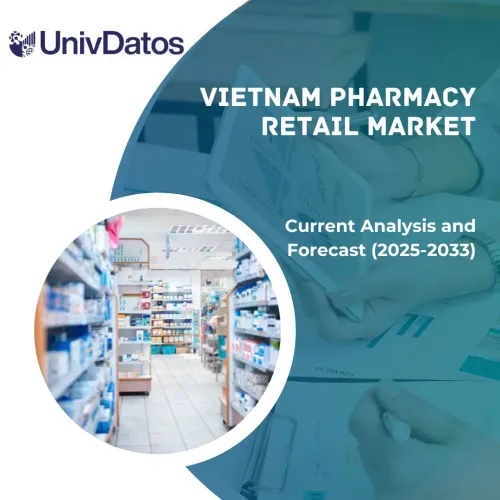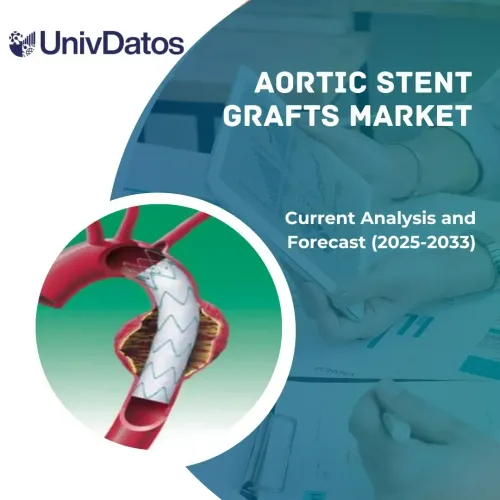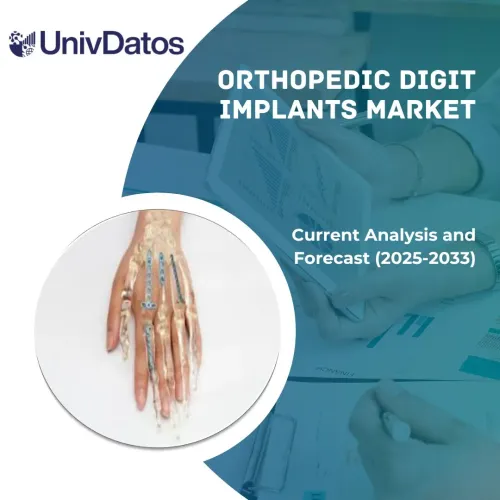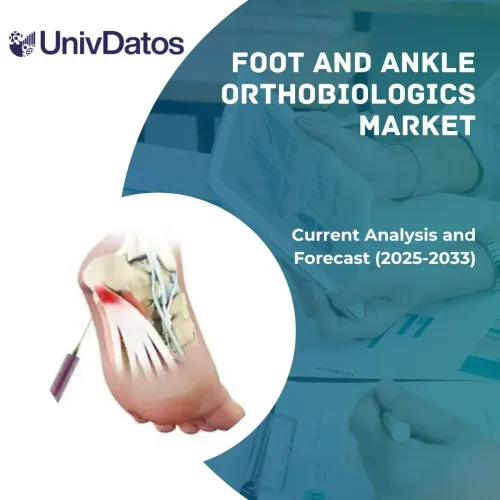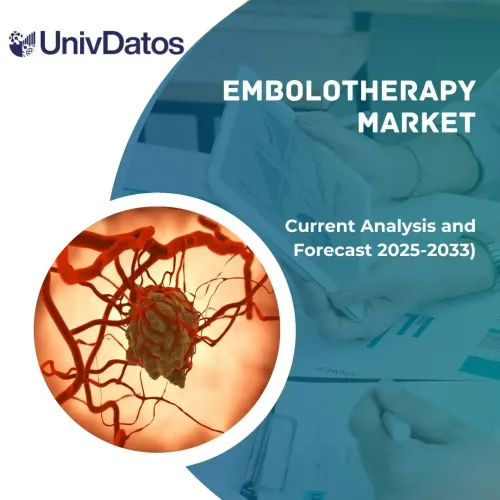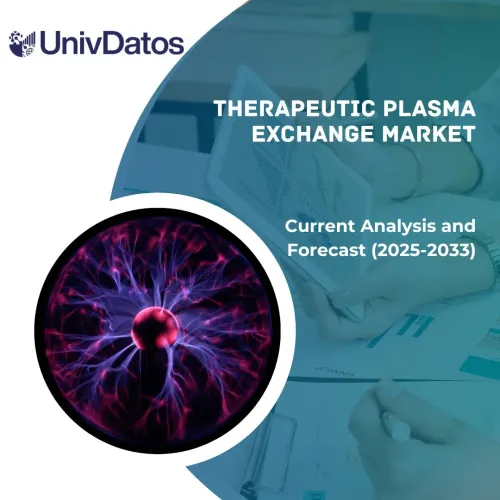- Home
- About Us
- Industry
- Services
- Reading
- Contact Us
Healthcare Distribution Market: Current Analysis and Forecast (2021-2027)
Type (Pharmaceutical Product Distribution Services, Biopharmaceutical Product Distribution Services, Medical Device Distribution Services); End-User (Retail Pharmacies, Hospital Pharmacies, Others); Region and Country
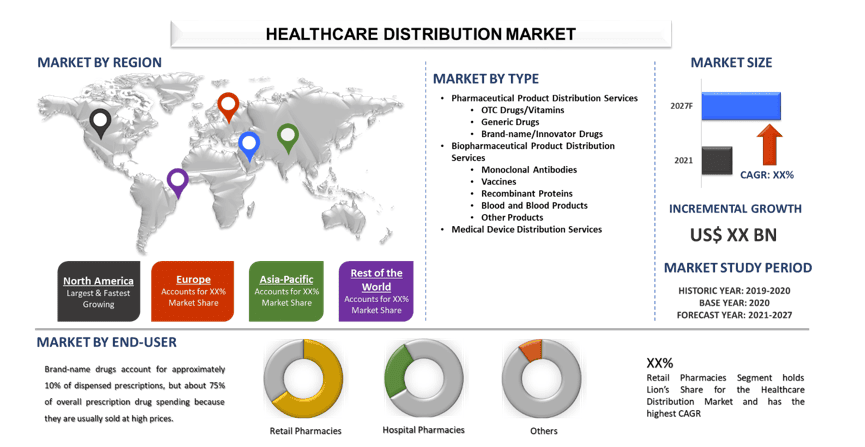
Healthcare Distribution Market is expected to exceed the market valuation of more than US$ ~1,300 in 2027 pharmaceuticals and manage both inventory and credit risk; this allows manufacturers to focus on their core competencies of pharmaceutical drug development and manufacturing. Distributors amplify value in the health care ecosystem by delivering aggregation efficiencies and economies of scale that reduce capital and operating expenses for the broader pharmaceutical value chain. Distributors play a critical role in supporting patient safety, enabling the right product to reach the right patient in a timely and transparent manner, including processing over 200 recall events per year. Emerging and converging market trends are impacting and reshaping distributors’ traditional role of health care intermediary. These trends are providing both opportunities and challenges; in response, distributors are evolving and adapting to ensure that their services provide added value today and in the future.
The growth of this market is primarily driven by the rising incidence of chronic diseases, growing importance of generics, rising adoption of track & trace solutions, and the growth of the medical device industry. In addition, emerging markets such as China and India, growth in the biosimilars market, increasing specialty drug dispensing, and increasing uptake of biopharmaceuticals are expected to offer potential growth opportunities to market players in the coming years. However, the increasing pricing pressure on market players is a major factor that is expected to impact market growth in the coming years. Healthcare distribution is defined as a concept of providing different care services like drugs, diagnostic test and other facilities to the patients. Healthcare system is very useful as it help people to stay healthy. Pharmaceutical product distribution, medical device distribution service, biopharmaceutical distribution service are some of the common types of the healthcare distribution. Healthcare industry is using many different technologies and developments to expand healthcare industry and to provide better facilities to the patients.
Distribution of United States Health Spending

McKesson Corporation, AmerisourceBergen Corporation, Cardinal Health, Inc., Owens & Minor, Inc., Morris and Dickson Co., LLC , KeySource Medical, Inc., Rochester Drug Cooperative, Inc., Henry Schein Inc., Smith Drug Company , and FFF Enterprises are some of the prominent players operating in the Healthcare Distribution market. Several M&As along with partnerships have been undertaken by these players to facilitate customers with hi-tech and innovative products/technologies.
Insights Presented in the Report
“Amongst Type, Pharmaceutical Product Distribution Services segment holds the major share”
Based on Type, the Healthcare Distribution Market is categorized into Pharmaceutical Product Distribution Services, Biopharmaceutical Product Distribution Services, and Medical Device Distribution Services. Healthcare distributors are the backbone of the healthcare ecosystem, serving as the vital link connecting approximately 1,500 pharmaceutical manufacturers to more than 180,000 individual pharmacies, hospitals, healthcare facilities and other sites of care in the United States.
“Amongst End-user, Retail Pharmacies segment holds the major share”
Based on End-User, the Healthcare Distribution Market is bifurcated into Retail Pharmacies, Hospital Pharmacies and Others. Pharmacies are where most patients receive prescription drugs and, increasingly, vaccines. Retail pharmacists advise patients on their medication regimens and help them avoid drug interactions and screen for possible side effects to medications. Over the past two decades, the pharmacy market has changed significantly: there has been vertical and horizontal consolidation; new forms of pharmacies have emerged in addition to independent, chain retail, and mail-order pharmacies; services offered by retail pharmacies have increased; and new, potentially disruptive, entrants have emerged.
“North America represents one of the largest markets of Healthcare Distribution market”
For a better understanding of the market dynamics of the Healthcare Distribution market, a detailed analysis was conducted for different regions across the world including North America (US, Canada, Rest of North America), Europe (Germany, UK, France, Spain, Italy, Rest of Europe), Asia-Pacific (China, Japan, India, Australia, Rest of Asia-Pacific), Rest of World. North America dominated the market and grabbed around XX% market share owing to increasing penetration of internet in the region.
Reasons to buy this report:
- The study includes market sizing and forecasting analysis validated by authenticated key industry experts
- The report presents a quick review of overall industry performance at one glance
- The report covers an in-depth analysis of prominent industry peers with a primary focus on key business financials, product portfolio, expansion strategies, and recent developments
- Detailed examination of drivers, restraints, key trends, and opportunities prevailing in the industry
- The study comprehensively covers the market across different segments
- Deep dive regional level analysis of the industry
Customization Options:
Healthcare Distribution market can further be customized as per the requirement or any other market segment. Besides this, UMI understands that you may have your own business needs, hence feel free to connect with us to get a report that completely suits your requirements.
Table of Content
Analyzing the historical market, estimation of the current market, and forecasting the future market of the Healthcare Distribution market were the three major steps undertaken to create and analyze the adoption of Healthcare Distribution in major regions globally. Exhaustive secondary research was conducted to collect the historical market numbers and estimate the current market size. Secondly, to validate these insights, numerous findings and assumptions were taken into consideration. Moreover, exhaustive primary interviews were also conducted, with industry experts across the value chain of the Healthcare Distribution market. Post assumption and validation of market numbers through primary interviews, we employed a top-down/bottom-up approach to forecasting the complete market size. Thereafter, market breakdown and data triangulation methods were adopted to estimate and analyze the market size of segments and sub-segments the industry pertains to. Detailed methodology is explained below:
Analysis of Historical Market Size
Step 1: In-Depth Study of Secondary Sources:
Detail secondary study was conducted to obtain the historical market size of the Healthcare Distribution through company internal sources such as annual report & financial statements, performance presentations, press releases, etc., and external sources including journals, news & articles, government publications, competitor publications, sector reports, third-party database, and other credible publications.
Step 2: Market Segmentation:
After obtaining the historical market size of the Healthcare Distribution market, we conducted a detailed secondary analysis to gather historical market insights and share for different segments & sub-segments for major regions. Major segments included in the report as Type, End-User. Further country-level analyses were conducted to evaluate the overall adoption of Healthcare Distribution in that region.
Step 3: Factor Analysis:
After acquiring the historical market size of different segments and sub-segments, we conducted a detailed factor analysis to estimate the current market size of Healthcare Distribution. Further, we conducted factor analysis using dependent and independent variables such as increasing chronic diseases. A thorough analysis was conducted for demand and supply-side scenarios considering top partnerships, merger and acquisition, business expansion, and product launches in the Healthcare Distribution sector across the globe.
Current Market Size Estimate & Forecast
Current Market Sizing: Based on actionable insights from the above 3 steps, we arrived at the current market size, key players in the Healthcare Distribution market, and market shares of the segments. All the required percentage shares split, and market breakdowns were determined using the above-mentioned secondary approach and were verified through primary interviews.
Estimation & Forecasting: For market estimation and forecast, weights were assigned to different factors including drivers & trends, restraints, and opportunities available for the stakeholders. After analyzing these factors, relevant forecasting techniques i.e., top-down/bottom-up approach was applied to arrive at the market forecast about 2027 for different segments and sub segments across the major markets globally. The research methodology adopted to estimate the market size encompasses:
- The industry’s market size, in terms of value (US$) and the adoption rate of Healthcare Distribution across the major markets domestically
- All percentage shares, splits, and breakdowns of market segments and sub-segments
- Key players in the Healthcare Distribution market in terms of products offered. Also, the growth strategies adopted by these players to compete in the fast-growing market
Market Size and Share Validation
Primary Research: In-depth interviews were conducted with the Key Opinion Leaders (KOLs) including Top Level Executives (CXO/VPs, Sales Head, Marketing Head, Operational Head, and Regional Head, Country Head, etc.) across major regions. Primary research findings were then summarized, and statistical analysis was performed to prove the stated hypothesis. Inputs from primary research were consolidated with secondary findings, hence turning information into actionable insights.
Split of Primary Participants in Different Regions
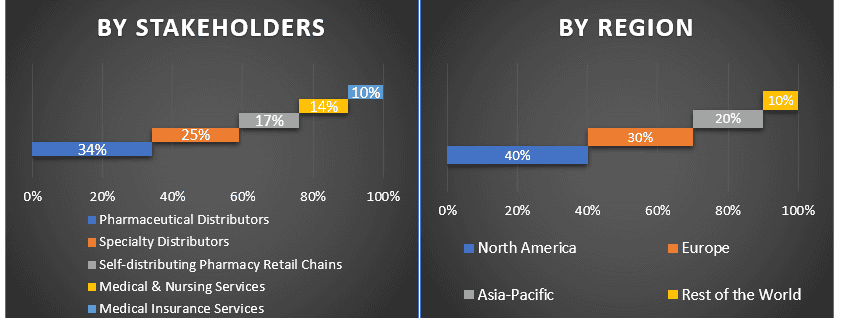
Market Engineering
Data triangulation technique was employed to complete the overall market estimation and to arrive at precise statistical numbers of each segment and sub-segment of the Healthcare Distribution market. Data was split into several segments & sub-segments post studying various parameters and trends in the areas of type and their type of the Healthcare Distribution market.
The main objective of the Healthcare Distribution Market Study
The current & future market trends of Healthcare Distribution were pinpointed in the study. Investors can gain strategic insights to base their discretion for investments from the qualitative and quantitative analysis performed in the study. Current and future market trends were determined the overall attractiveness of the market at a regional level, providing a platform for the industrial participant to exploit the untapped market to benefit as a first-mover advantage. Other quantitative goals of the studies include:
- Analyze the current and forecast market size of Healthcare Distribution in terms of value (US$). Also, analyze the current and forecast market size of different segments and sub-segments
- Segments in the study include areas of type and their subtypes
- Define and analysis of the regulatory framework for the Healthcare Distribution industry
- Analyze the value chain involved with the presence of various intermediaries, along with analyzing customer and competitor behaviors of the industry
- Analyze the current and forecast market size of the Healthcare Distribution market for the major region
- Major regions studied in the report include North America (US, Canada, Rest of North America), Europe (Germany, UK, France, Spain, Italy, Rest of Europe), Asia-Pacific (China, Japan, India, Australia, Rest of Asia-Pacific), Rest of World.
- Company profiles of the Healthcare Distribution market and the growth strategies adopted by the market players to sustain in the fast-growing market
Deep dive regional level analysis of the industry
Related Reports
Customers who bought this item also bought

